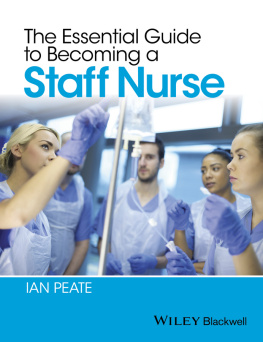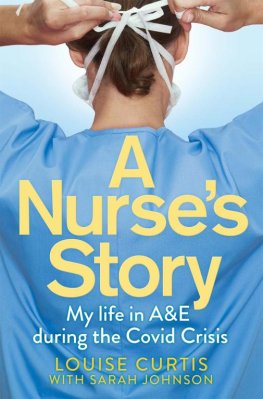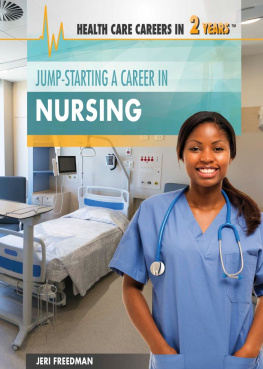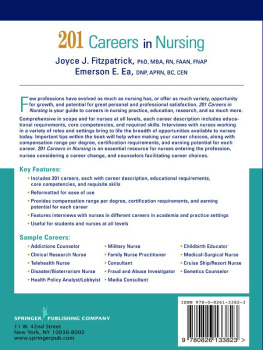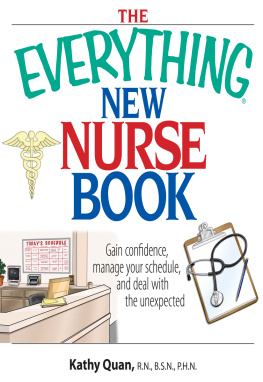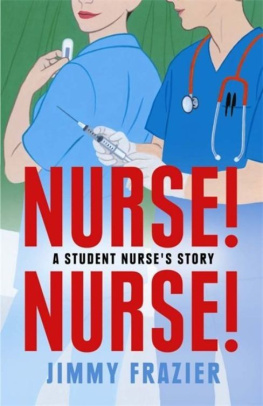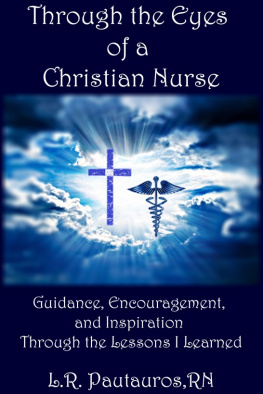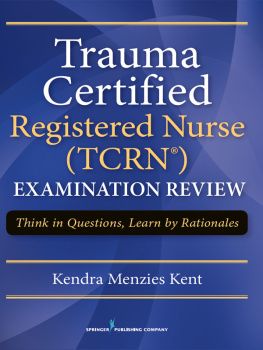
To staff nurses, past, present and future
This edition first published 2016 by John Wiley & Sons, Ltd
Registered office: John Wiley & Sons, Ltd, The Atrium, Southern Gate, Chichester, West Sussex, PO19 8SQ, UK
Editorial offices: 9600 Garsington Road, Oxford, OX4 2DQ, UK
The Atrium, Southern Gate, Chichester, West Sussex, PO19 8SQ, UK
1606 Golden Aspen Drive, Suites 103 and 104, Ames, Iowa 50010, USA
For details of our global editorial offices, for customer services and for information about how to apply for permission to reuse the copyright material in this book please see our website at www.wiley.com/wiley-blackwell.
The right of the author to be identified as the author of this work has been asserted in accordance with the UK Copyright, Designs and Patents Act 1988.
All rights reserved. No part of this publication may be reproduced, stored in a retrieval system, or transmitted, in any form or by any means, electronic, mechanical, photocopying, recording or otherwise, except as permitted by the UK Copyright, Designs and Patents Act 1988, without the prior permission of the publisher.
Designations used by companies to distinguish their products are often claimed as trademarks. All brand names and product names used in this book are trade names, service marks, trademarks or registered trademarks of their respective owners. The publisher is not associated with any product or vendor mentioned in this book. It is sold on the understanding that the publisher is not engaged in rendering professional services. If professional advice or other expert assistance is required, the services of a competent professional should be sought.
The contents of this work are intended to further general scientific research, understanding, and discussion only and are not intended and should not be relied upon as recommending or promoting a specific method, diagnosis, or treatment by health science practitioners for any particular patient. The publisher and the author make no representations or warranties with respect to the accuracy or completeness of the contents of this work and specifically disclaim all warranties, including without limitation any implied warranties of fitness for a particular purpose. In view of ongoing research, equipment modifications, changes in governmental regulations, and the constant flow of information relating to the use of medicines, equipment, and devices, the reader is urged to review and evaluate the information provided in the package insert or instructions for each medicine, equipment, or device for, among other things, any changes in the instructions or indication of usage and for added warnings and precautions. Readers should consult with a specialist where appropriate. The fact that an organization or Website is referred to in this work as a citation and/or a potential source of further information does not mean that the author or the publisher endorses the information the organization or Website may provide or recommendations it may make. Further, readers should be aware that Internet Websites listed in this work may have changed or disappeared between when this work was written and when it is read. No warranty may be created or extended by any promotional statements for this work. Neither the publisher nor the author shall be liable for any damages arising herefrom.
Library of Congress Cataloging-in-Publication Data applied for.
A catalogue record for this book is available from the British Library.
Wiley also publishes its books in a variety of electronic formats. Some content that appears in print may not be available in electronic books.
Cover image: Getty images/466458497/by sturti
About the Author
Ian Peate EN(G) RGN DipN (Lond) RNT BEd (Hons) MA (Lond) LLM
Ian began his nursing career in 1981 at Central Middlesex Hospital, becoming an enrolled nurse working in an intensive care unit. He later undertook 3 years of student nurse training at Central Middlesex and Northwick Park Hospitals, becoming a staff nurse and then a charge nurse. He has worked in nurse education since 1989. His key areas of interest are nursing practice and theory, men's health, sexual health and HIV. Ian has published widely; he is Professor of Nursing, Editor in Chief of the British Journal of Nursing and Head of School at the School of Health Studies, Gibraltar.
Editor in Chief British Journal of Nursing,
Head of School
School of Health Studies
Gibraltar
Acknowledgements
I would like to thank my partner Jussi Lahtinen for his ongoing support and encouragement, Mrs Frances Cohen for her continued help and assistance, Anthony Peate who contributed to the illustrations and the library staff at St Bernard's Hospital, Gibraltar.
Preface
Becoming a staff nurse brings with it a lot of mixed emotions, responsibilities and a salary. Three years of blood, sweat, tears and laughter have led to this position, but still your journey is not over as you become truly a lifelong learner.
The transition from student nurse to staff nurse takes place overnight, from being a student nurse and then a registered nurse with a personal identification number from the Nursing and Midwifery Council (NMC) and then there is the change from being responsible to being accountable; for some this can be daunting. Some may suggest the transition takes 3 years, from the day you commenced your education. The text aims to facilitate the transitional process.
Contemporary nursing practice is constantly changing and evolving. Historically, nursing has been offered at certificate level and then diploma level and now entry to the professional register can only occur if the registrant has been educated to degree level. Since September 2013 all pre-registration nursing programmes leading to registration have been at a minimum undergraduate degree level. Throughout all the changes the length of the programmes has remained at 3 years.
The title Nurse is a title that is protected in law; no person is allowed to purport to be a nurse unless his or her name appears on the professional register and no person can practice nursing unless his or her name has been entered onto the professional register. Entry to the professional register can only occur when the standards that the NMC have set for education have been met. You have met those standards (exacting standards) and your name is on the professional register. You have made it, be proud and uphold the standards of the profession, congratulations!
There has been a massive reorganisation of health and social service provision and there have been a number of high-profile cases concerning nursing and nurses reported in the media. All of this has had an impact on the role and function of the newly registered nurse the staff nurse.
The world continues to change and in response to this the provision of nursing services has also needed to change. Nurses are now working in a variety of health and social care sectors that had hitherto been unheard of. This text takes into account the direction for nursing as detailed in policy and practice, identifying the changes necessary to the way nurses work and to their roles, responsibilities, educational and developmental requirements in order to deliver safe, competent and compassionate patient-centred nursing services. The text is suited to the community setting, primary and acute care with an emphasis upon the adult field of nursing; however, the broad principles can be applied across all fields.
Each chapter begins with an aim and a set of objectives helping the reader pre-plan for what is to come and to understand the rationale for the discrete yet intertwined chapters. Text layout has been given much thought, aiming to ensure that it is user friendly and engaging. There are 10 chapters. Inspiration is provided throughout the text at appropriate intervals offering the reader practical hints and tips, where you are asked to consider specific issues. You will be asked to carry out a variety of exercises along the way, where the author hands over to the staff nurse.
Next page
